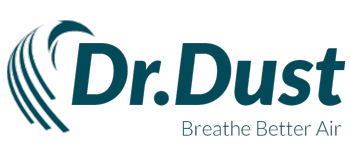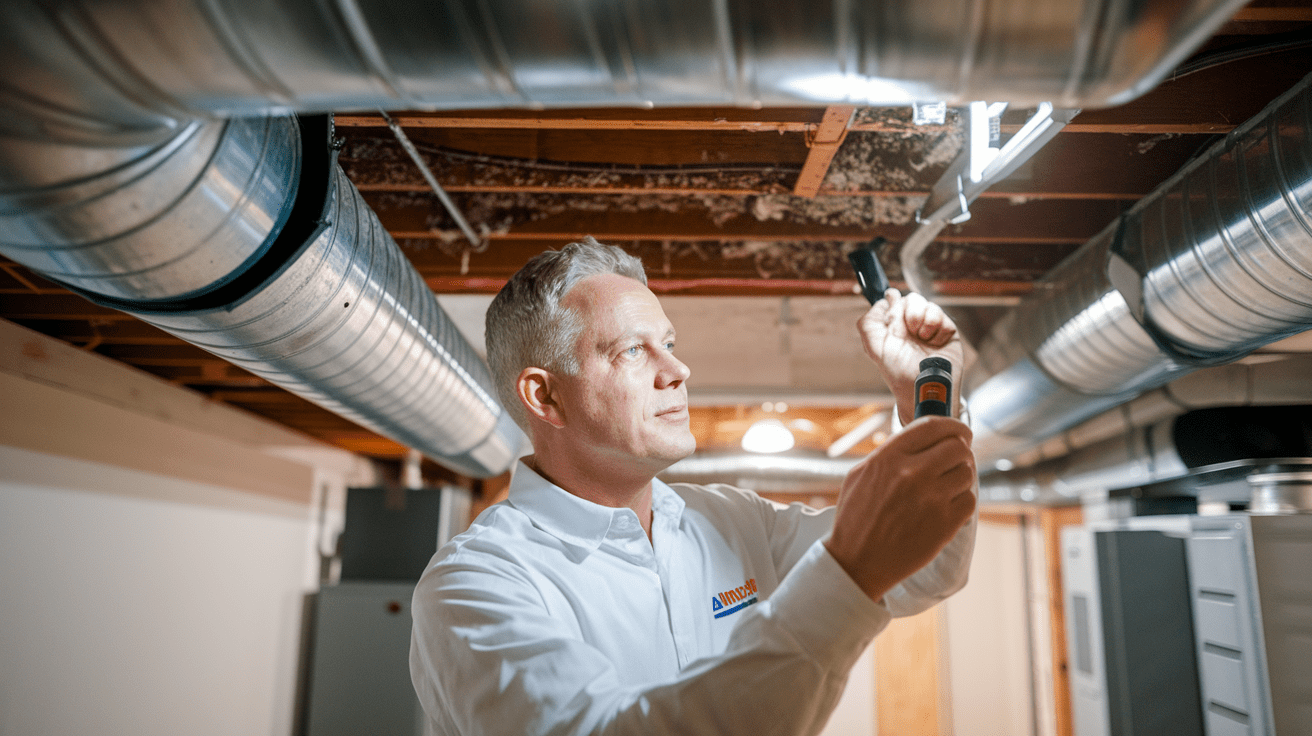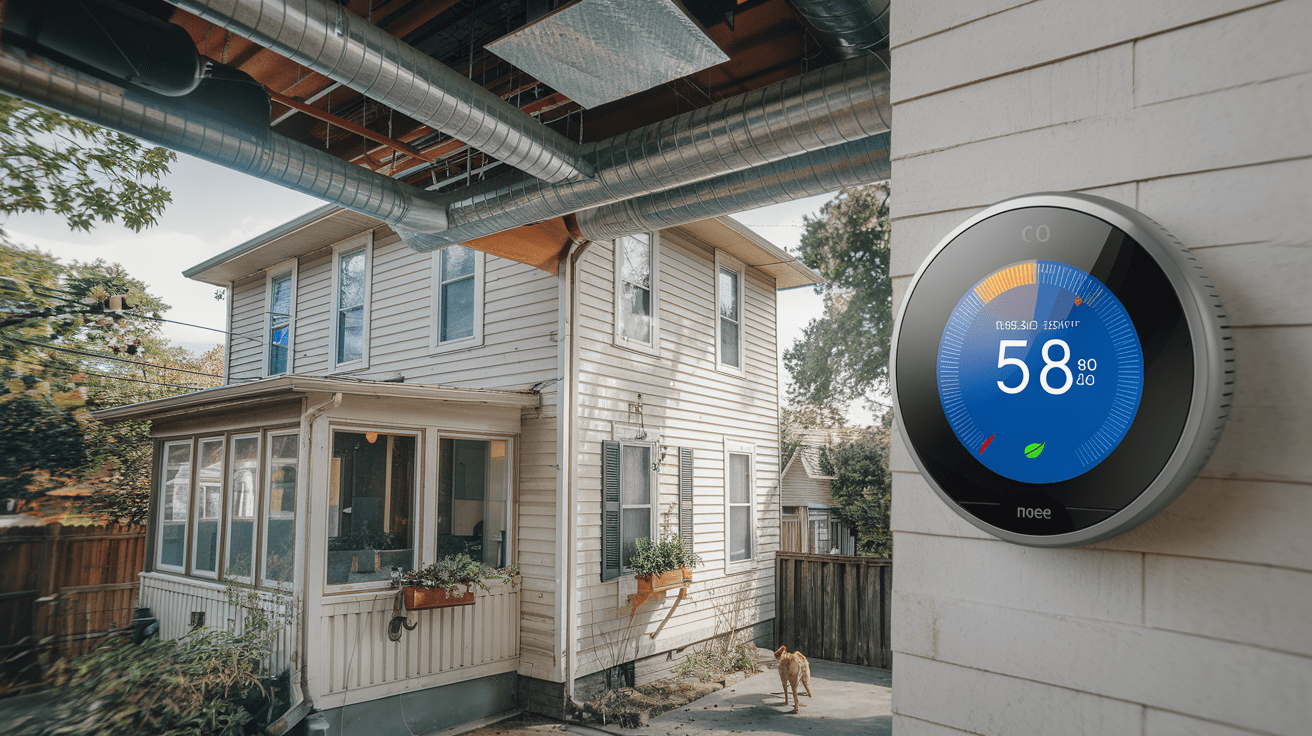Ever found yourself staring at dusty vents, wondering if it’s finally time to get your air ducts cleaned? You’re not alone. Millions of homeowners struggle with this exact question every year, unsure if they’re being paranoid or neglectful.
Here’s the deal: understanding when to clean your air ducts isn’t just about following a calendar. It’s about knowing what’s actually happening in your home’s respiratory system.
The truth about air duct cleaning frequency isn’t what most HVAC companies want you to hear. While some experts push for regular cleanings, others suggest a more nuanced approach based on your specific situation.
By the end of this post, you’ll know exactly when your air ducts truly need cleaning—and when cleaning services are just vacuuming up your hard-earned cash instead of meaningful debris.
Understanding Air Duct Cleaning Fundamentals
Signs Your Air Ducts Need Cleaning
Ever walk into a room and notice dust floating in a beam of sunlight even after cleaning? That’s often your first clue that air ducts need attention.
When dust builds up faster than usual on your furniture and surfaces, your ducts might be working against you. Think about it – you’re essentially recycling dirty air throughout your home when ducts are clogged.
Strange smells coming from your vents when the air kicks on? That’s a red flag. Musty or stale odors usually mean there’s mold, mildew, or debris trapped in your ductwork.
Look at your air vents. If you can see visible dust buildup or dark particles around the edges, that’s basically your ducts screaming for help. And if anyone in your home has unexplained allergy flare-ups or breathing issues, dirty ducts could be the culprit.
Health Benefits of Regular Duct Cleaning
Clean ducts mean cleaner air – it’s that simple. When you remove built-up contaminants, you’re immediately improving the air quality in your living space.
For allergy sufferers, this is huge. Regular duct cleaning can dramatically reduce common allergens like pet dander, pollen, and dust mites that love to hide in ductwork. Many homeowners report fewer asthma attacks and respiratory issues after a professional cleaning.
Parents, take note: children are especially vulnerable to poor air quality since their lungs are still developing. Clean ducts create a healthier environment for kids to grow up in.
Energy Efficiency Gains from Clean Ducts
Your wallet will thank you for clean ducts. When dust and debris clog your system, your HVAC equipment has to work harder to push air through, driving up your energy bills.
Most homeowners don’t realize that clean ducts can reduce energy consumption by up to 21%. That’s money back in your pocket every month.
Your heating and cooling system also lasts longer when it’s not constantly fighting against clogged ducts. Think of it like changing your car’s oil – regular maintenance prevents expensive breakdowns down the road.
Industry Standards for Cleaning Frequency
The National Air Duct Cleaners Association (NADCA) recommends cleaning air ducts every 3-5 years for most homes. But this isn’t a one-size-fits-all answer.
If you have pets, smokers, or people with respiratory conditions in your home, you’re looking at more frequent cleanings – closer to the 3-year mark.
Recently renovated? Construction creates tons of dust that settles in your ductwork. New construction or post-renovation homes should have their ducts cleaned immediately.
The EPA doesn’t specify cleaning intervals but suggests doing it “as needed” when you notice the warning signs we talked about earlier. Trust your instincts – if something seems off with your air quality, it probably is.
Key Factor 1: Home Environment Conditions
A. Impact of Pets on Air Duct Cleanliness
Got furry friends at home? They’re adorable, but they’re also walking air duct contaminators. Pets shed dander, hair, and bring in outdoor allergens that get pulled into your HVAC system.
Dogs and cats can shed up to a cup of hair weekly during shedding season. That hair doesn’t just disappear—it gets circulated through your air ducts and can build up over time. Pet dander is even worse because it’s microscopic and floats freely through the air.
If you have multiple pets or breeds that shed heavily (looking at you, Huskies and Maine Coons), you should consider cleaning your ducts every 2-3 years instead of the standard 3-5 years.
B. How Smoking Affects Duct Contamination
Smoking indoors is basically giving your air ducts a nicotine bath. Tobacco smoke contains over 4,000 chemicals that stick to duct surfaces like glue. These particles create a sticky film inside ducts that attracts and holds other contaminants.
The residue from just one smoker can reduce air quality dramatically and force your HVAC system to work harder. In homes with regular indoor smoking, duct cleaning might be needed annually rather than every few years.
C. Dealing with High Dust Environments
Live on a dirt road? Near construction? In a desert region? Your ducts are likely filling with dust faster than average.
High-dust environments can cause filters to clog quickly and push more particulates into your ductwork. Regular filter changes help, but they can’t catch everything.
For homes in dusty areas, consider semi-annual filter changes and duct inspections every 2 years, with cleaning as needed based on what the inspection reveals.
D. Regional Climate Considerations
Your local climate plays a huge role in duct contamination. Humid climates create perfect conditions for mold growth in ducts, while dry climates kick up more dust.
In areas with high humidity (above 60%), moisture can condense inside cool ducts during summer. This moisture becomes a breeding ground for mold and bacteria. Coastal regions face additional challenges from salt air, which can be corrosive over time.
Seasonal changes also impact duct cleanliness. Pollen seasons can overwhelm even good filtration systems, while winter often means keeping windows closed, recirculating the same air (and contaminants) for months.
E. New Construction or Renovation Effects
Just finished building or renovating? Your ducts are likely filled with construction dust, drywall particles, and debris from sawing, sanding, and other construction activities.
This fine dust is particularly problematic because it contains silica and other materials you definitely don’t want circulating in your home. After construction or major renovations, schedule a duct cleaning once all work is complete—don’t wait for the regular cleaning cycle.
Key Factor 2: Resident Health Considerations
Key Factor 2: Resident Health Considerations
Your home’s air quality directly impacts your family’s health. When it comes to duct cleaning, health considerations often trump all other factors.
A. Solutions for Allergy and Asthma Sufferers
If someone in your household battles allergies or asthma, your air ducts deserve extra attention. Dirty ducts can become breeding grounds for allergens that trigger reactions.
Here’s what happens: dust mites, pet dander, pollen, and other irritants get pulled into your HVAC system and recirculate through your home up to 7 times daily. For allergy sufferers, this creates a never-ending cycle of symptoms.
Many homeowners with respiratory issues benefit from more frequent cleanings—every 1-2 years instead of the standard 3-5. After a professional cleaning, families often report:
- Reduced medication usage
- Fewer asthma attacks
- Better sleep quality
- Less severe seasonal allergy symptoms
One customer told me: “My son’s nighttime coughing completely stopped within a week after cleaning our ducts. We had no idea how much the dirty system was affecting him.”
B. Protecting Vulnerable Family Members
Certain household members need extra protection from airborne contaminants:
- Infants and young children
- Elderly family members
- People with compromised immune systems
- Those recovering from surgery or illness
Their developing or weakened systems are more susceptible to respiratory problems. If your household includes vulnerable members, consider more frequent duct cleaning as preventative healthcare.
For homes with newborns, many pediatricians recommend cleaning ducts before bringing baby home, then maintaining a 2-3 year schedule afterward.
C. Addressing Mold and Mildew Concerns
Moisture is the enemy of healthy air ducts. When humidity builds up in your system, it creates perfect conditions for mold and mildew growth. These fungi release spores that can cause:
- Persistent coughing
- Throat irritation
- Eye irritation
- Skin rashes
- Headaches
- In severe cases, lung infections
Signs you might have mold in your ductwork include musty odors when the system runs, visible mold around vents, or unexplained respiratory symptoms that improve when you leave home.
Don’t take chances with mold. If you suspect or see evidence of growth, schedule immediate inspection and cleaning. Homes in humid climates or those that have experienced water damage should prioritize regular duct maintenance every 2 years.
Remember: while standard dust is unpleasant, mold and bacteria in your air ducts present serious health risks that shouldn’t be ignored.
Key Factor 3: Home Characteristics and Usage
Key Factor 3: Home Characteristics and Usage
A. Size and Age of Your Home’s Impact
The size of your home directly affects how much dust and debris your ductwork collects. Larger homes simply have more air circulating through longer duct systems, which means more opportunity for dust to settle inside them.
Older homes? They’re dust magnets. If your home has been standing for decades, your ducts might contain years of accumulated dust, pet dander, and who-knows-what from previous owners. Homes built before the 1990s often have ductwork that wasn’t designed with modern air quality standards in mind.
A 2,500-square-foot home built in the 1970s will likely need more frequent duct cleaning than a new 1,200-square-foot condo. It’s just math and physics working against you.
B. HVAC System Type and Maintenance History
Your HVAC system’s type dramatically affects your duct cleaning schedule. Heat pumps, forced air systems, and radiant heating all interact differently with your ductwork.
The maintenance history matters too. If the previous homeowner never changed filters or had the system serviced, you might be inheriting a mess. I’ve seen ducts so clogged that the new owners needed immediate cleaning just to get proper airflow.
Systems with poor maintenance histories might need cleaning every 2-3 years, while well-maintained systems might go 5-7 years between cleanings.
C. Air Filter Quality and Replacement Schedule
The humble air filter is your first line of defense against dirty ducts. Using bargain-basement filters and changing them annually? Your ducts are probably filthy right now.
High-MERV-rated filters (11+) catch significantly more particles than basic fiberglass filters. But even the best filter becomes useless when clogged.
A good rule of thumb:
- Basic filters: Change monthly
- Mid-range filters: Change every 2-3 months
- High-efficiency filters: Change every 3-6 months
Each missed filter change means more debris bypassing your filter and settling in your ductwork.
D. Ventilation System Design Influence
Not all duct systems are created equal. Some homes have beautifully designed, straight duct runs with minimal bends and proper sizing. Others look like a plate of spaghetti thrown against the wall.
Poorly designed systems with sharp bends, undersized ducts, or improper connections create dead spots where dust settles and builds up. These problematic designs might need cleaning twice as often as well-designed systems.
The material matters too. Flexible ducts with ridged interiors trap more dust than smooth metal ducts. And don’t get me started on unlined ductboard, which can become a breeding ground for mold and bacteria if humidity levels aren’t properly controlled.
Creating Your Personalized Cleaning Schedule
DIY Assessment Techniques
Look, you don’t always need to call in the pros to figure out if your air ducts need cleaning. You can spot the warning signs yourself with these simple checks:
Grab a flashlight and peek into your vents. See dust bunnies having a party in there? That’s a red flag. But don’t just check one vent—look at several throughout your home to get the full picture.
Pay attention to what happens when you turn on your heating or cooling. If you notice a puff of dust coming from the vents, your ducts are practically screaming for attention.
Has your energy bill mysteriously climbed? Dirty ducts force your HVAC system to work overtime, burning more energy and your hard-earned cash.
Here’s a quick DIY inspection checklist:
- Check vent covers for visible dust buildup
- Look for mold around air vents (especially in bathrooms and basements)
- Monitor how quickly dust returns after cleaning your home
- Note any unusual odors when the system runs
- Track family allergy symptoms—they often worsen with dirty ducts
Professional Inspection Benefits
DIY checks are great, but sometimes you need an expert’s eyes. Professional inspectors bring specialized tools and training to the table.
A pro can reach deep into your ductwork with cameras to spot problems you’d miss. They can test air quality and identify contaminants you can’t see—like mold spores, bacteria, or even pest droppings.
The best part? Professionals can give you a customized timeline for future cleanings based on your specific situation, not just some generic recommendation.
Balancing Cost vs. Health Considerations
I get it—duct cleaning isn’t cheap. Professional cleanings typically run between $300-$500 depending on your home size. But skimping here can cost you more down the road.
Think of it this way: what’s the price of your family’s health? If someone in your home has asthma, allergies, or respiratory issues, regular duct cleaning isn’t a luxury—it’s a necessity.
The math actually works in your favor long-term. Clean ducts can:
- Reduce energy bills by up to 30%
- Extend the life of your expensive HVAC equipment
- Potentially lower healthcare costs from air quality-related illnesses
Documentation System for Ongoing Maintenance
Start treating your air ducts like any other important home system by keeping records. A simple maintenance log can save you headaches and money.
Create a digital or physical folder containing:
- Dates of previous cleanings
- Photos of duct condition before and after cleaning
- Notes about any special issues found
- Records of filter changes
- Seasonal observations about air quality or dust levels
Set calendar reminders based on your personalized schedule, not just whenever you happen to remember. Most homeowners benefit from setting up automatic notifications every 2-3 years to reassess duct condition.
Clean air ducts are essential for maintaining good indoor air quality and ensuring your HVAC system operates efficiently. While some homes may require cleaning every 3-5 years, others with pets, allergies, recent renovations, or visible mold might need more frequent attention. Consider your specific home environment, health needs, and property characteristics when determining your ideal schedule.
Take the time to assess your situation based on the three key factors we’ve discussed. If you’re uncertain, consult with a professional HVAC technician who can provide personalized recommendations for your home. Remember that investing in regular air duct maintenance isn’t just about cleaner air—it’s about creating a healthier living environment for you and your family.







You can definitely see your skills in the work you write. The world hopes for even more passionate writers like you who aren’t afraid to say how they believe. Always go after your heart.
Magnificent items from you, man. I’ve keep in mind your stuff prior to and you are just extremely great. I really like what you have bought here, certainly like what you’re saying and the best way by which you are saying it. You make it entertaining and you still take care of to keep it wise. I can’t wait to learn far more from you. That is really a tremendous web site.
Wow! Thank you! I permanently needed to write on my blog something like that. Can I take a part of your post to my website?